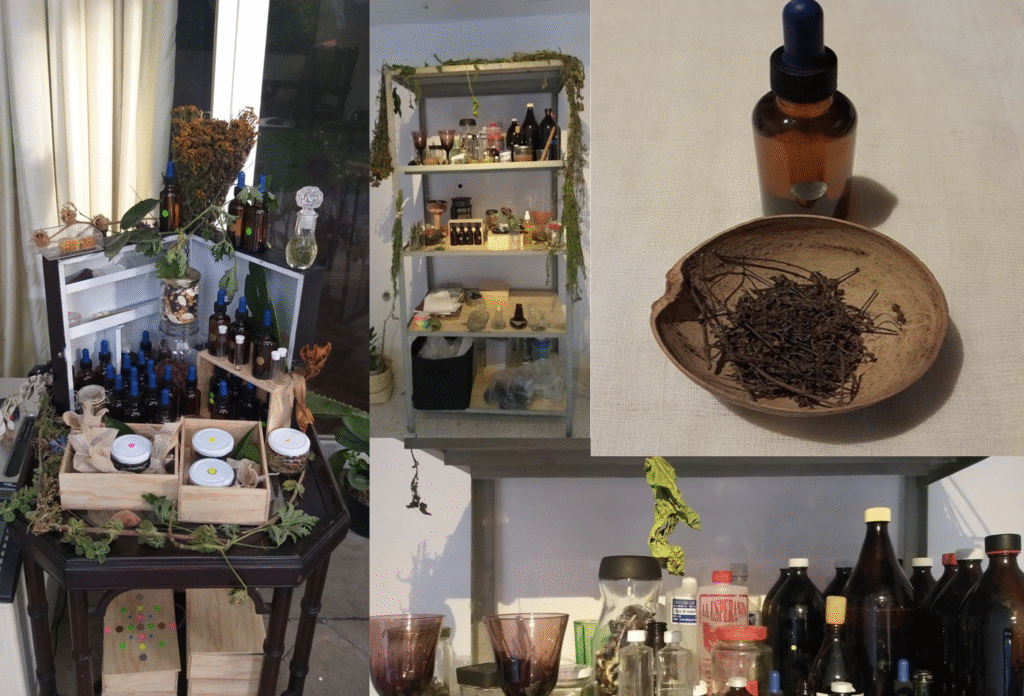
Category: 2020
-
Psychotropical Apothecary (Pharmakon)

Exposition name: Psychotropical Apothecary (Pharmakon)
-
American Goddesses Xtabay
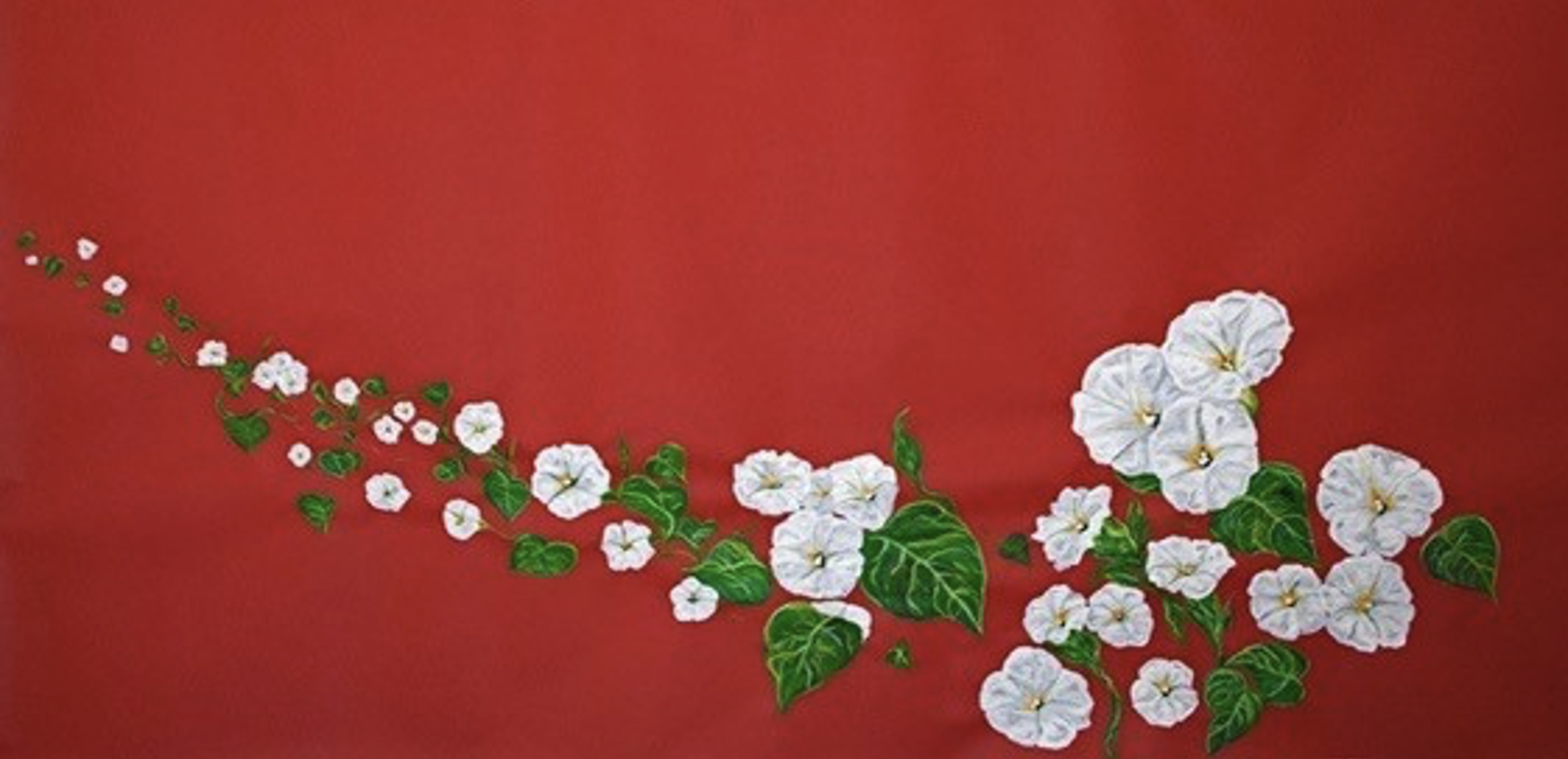
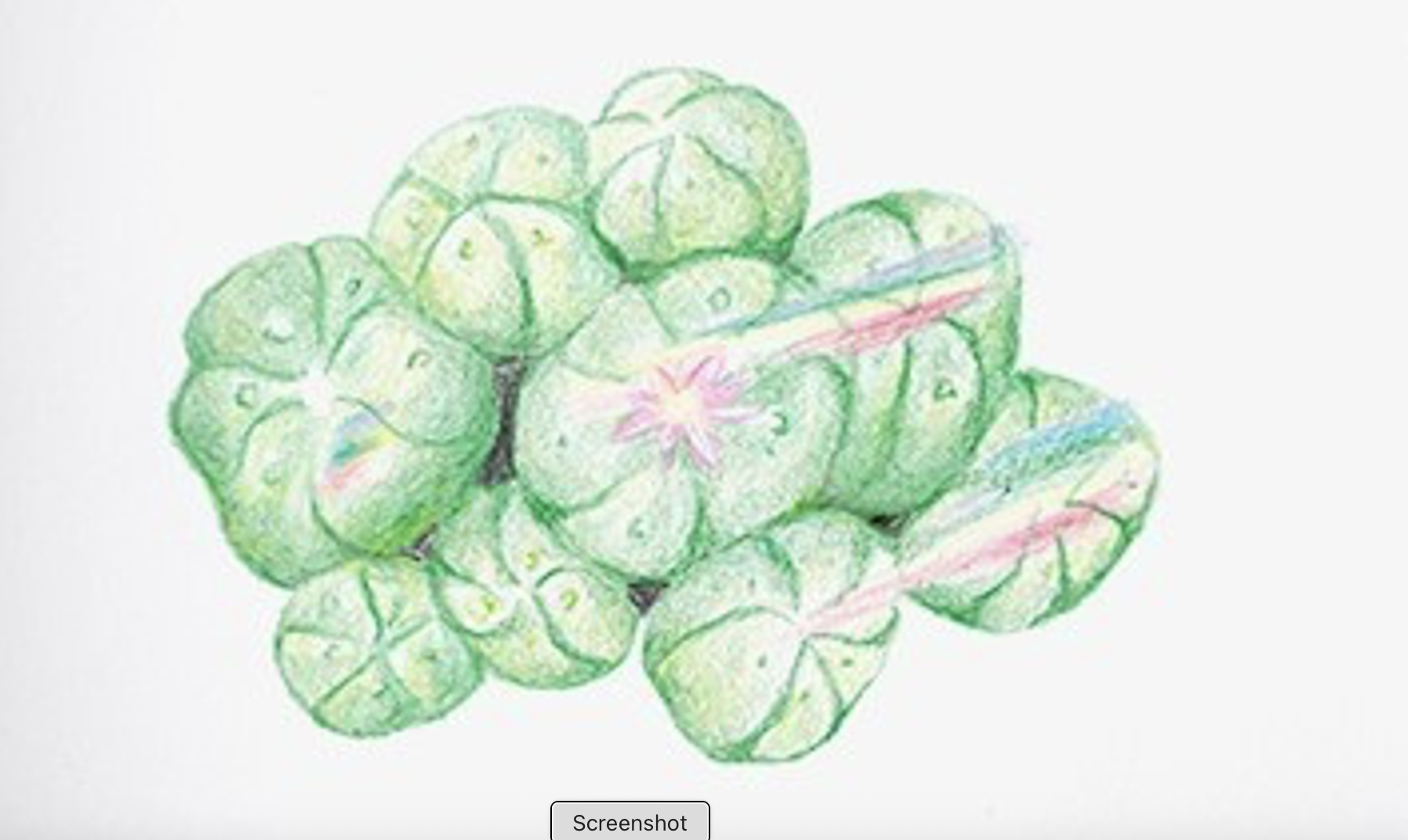
Exposition name: American Goddesses Xtabay
Locations: Private Collection
Type: Paintings
Materials: Acrylic paint on cotton paper, Color pencil on paper, paintings and drawings, watercolor.
Dimensions: Multiple
Date: 2019 – 2020
Description: The Mayan legend of the Ololiuhqui or Xtabentún flower tells of two sisters: Xtabay, kind, generous, and misunderstood for her open-heartedness, and Utz-Colel, praised for her purity but inwardly cold and envious. When Xtabay died, her body released a sweet fragrance, and from it bloomed a delicate white flower—the sacred Xtabentún, used ritually by the Maya for its psychoactive seeds containing LSA. She became a compassionate goddess, guardian of desperate souls. Jealous, Utz-Colel vowed that a more beautiful flower would grow from her body. Upon her death, a stunning cactus appeared, but with a foul odor—the Tsacam, reflecting her true nature. Furious, she pleaded with the Lords of the Underworld and was allowed to return in Xtabay’s form, but as a demon. Since then, she appears beneath the Ceiba tree, luring intoxicated men into the underworld. The legend contrasts superficial virtue with genuine compassion and honors the spiritual power of love and generosity. -
Street Herbaries
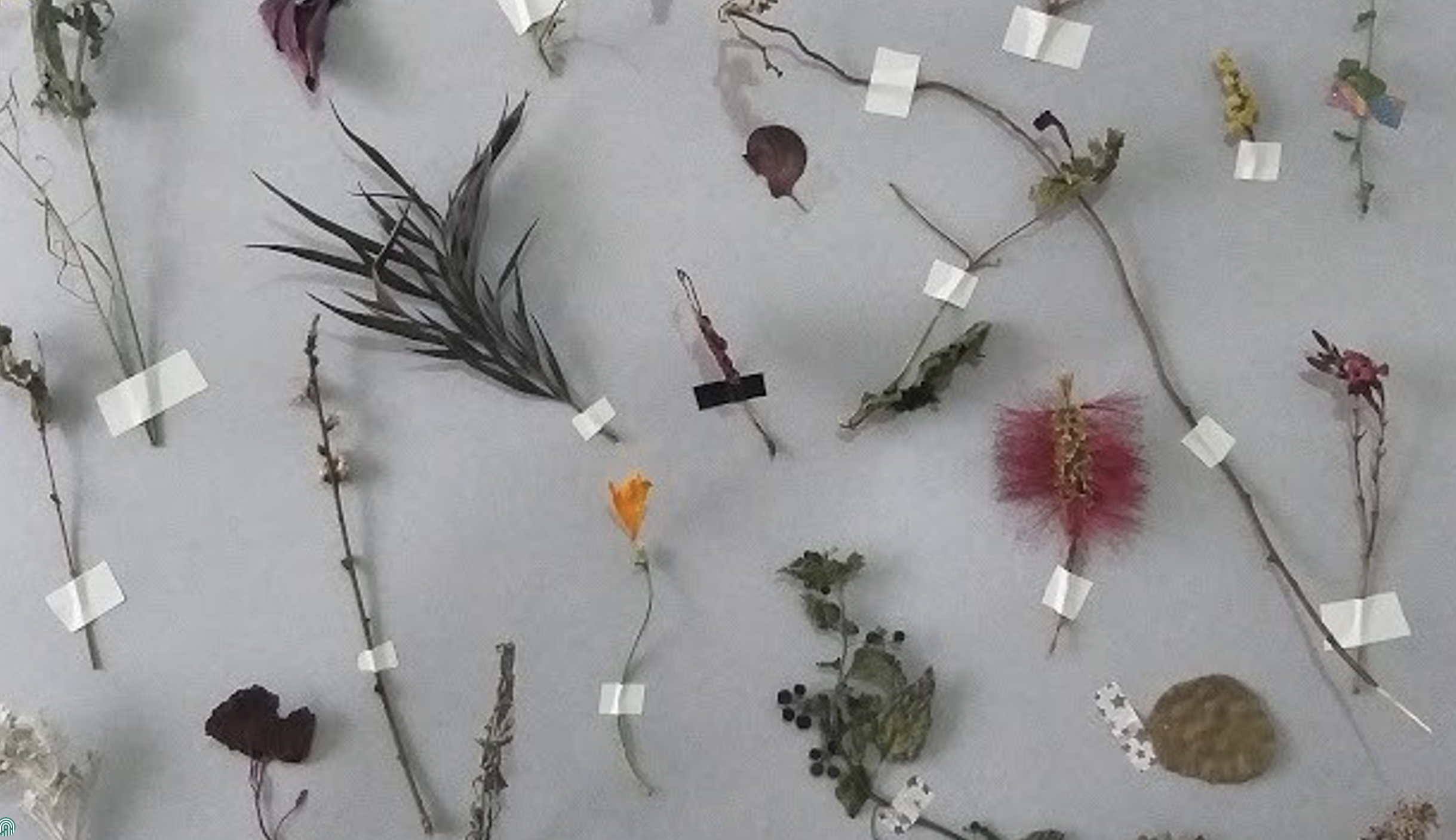
Exposition name: Street Herbaries
Locations: Colombia y México: Bogotá, Pereira, Guadalajara, Oaxaca, Cuernavaca, Nayarit, Ciudad de México, among others…
Type: Collection of vegetables samples, paintings and drawings.
Materials: Collage on paper dry part of plants, flowers and leafs
Dimensions: 21 cm x 28 cm & 1 m by 70 cm
Date: 2019 – 2020
Description: Explores the intersection of art, botany, and consciousness through a collection of vegetable samples, paintings, and drawings. The series Street Herbaries includes over 50 samples of entheogenic plants gathered from sidewalks in cities across Colombia and Mexico—Bogotá, Pereira, Guadalajara, Oaxaca, Cuernavaca, Nayarit, and Mexico City—mounted on colored paper sheets (21 x 28 cm), produced between 2019 and 2020. Plants such as Brugmansia, Ginseng, Ipomoea, Argemone Mexicana, and the Lisergic Rose are featured. The work HER (2021) continues this exploration with a 1 x 0.70 m collage composed of dried plant parts, flowers, and leaves collected from the streets, arranged on paper as a reflection on psychotropical biodiversity and everyday botanical encounters.
Back to the Art Expositions List >> -
Artificial Paradises: Bad Flowers

Exposition name: Artificial Paradises: Bad Flowers
Location: Pedro Cano’s Workshop (QEPD) Milpa Alta, Mexico City
Type: Sculptures of flowers on vanished ceramics at high temperature
Dimensions: Variable dimensions between 15 cm by 7 cm to 23 cm by 17 cm
Producer: Pedro Cano (RIP)
Date: 2019 – 2020
Description: Bad Flowers is a ceramic sculpture series featuring flowers, peyotes, and snakes crafted in high-temperature glazed ceramics. Ranging from 15 x 7 cm to 23 x 17 cm, these pieces were produced between 2019 and 2020 at the late Pedro Cano’s workshop in Milpa Alta, Mexico City. -
Equinoctial Mini Milpa


Exposition name: Equinoctial Mini Milpa
Location: México City
Date: Mar 2020
Description: The garden on the terrace of the building where I live began on March 21, 2020, at the start of the COVID-19 lockdown. In response to the uncertainty and isolation, I decided to create a pandemic garden on the rooftop—a living experiment rooted in the ancestral model of the milpa. I planted a variety of edible vegetables, grains, fruits, and medicinal herbs: corn, beans, pumpkins, amaranth, passion fruit, pineapples, watermelon, potatoes, muicle, aloe, mastuerzo, onions, garlic, estafiate, vaporub, rosemary, sugarcane, sage, damiana, cedrón, jasmine, chili peppers, brugmansias, peyote, and marijuana, among more than 100 other species. This mini milpa has been continuously documented for over a year, showing how the garden evolves, grows, and produces through the seasons. With minimal resources, it has yielded several harvests, becoming an ongoing act of resistance, sustainability, and care. The compost used is made from our own organic kitchen waste, closing the cycle of nourishment and regeneration. Some of the equinoctial harvests have included pumpkins, tomatoes, beans, corn, beets, and amaranth—fruits of a small ecosystem cultivated in resilience and intention. -
Bioceno
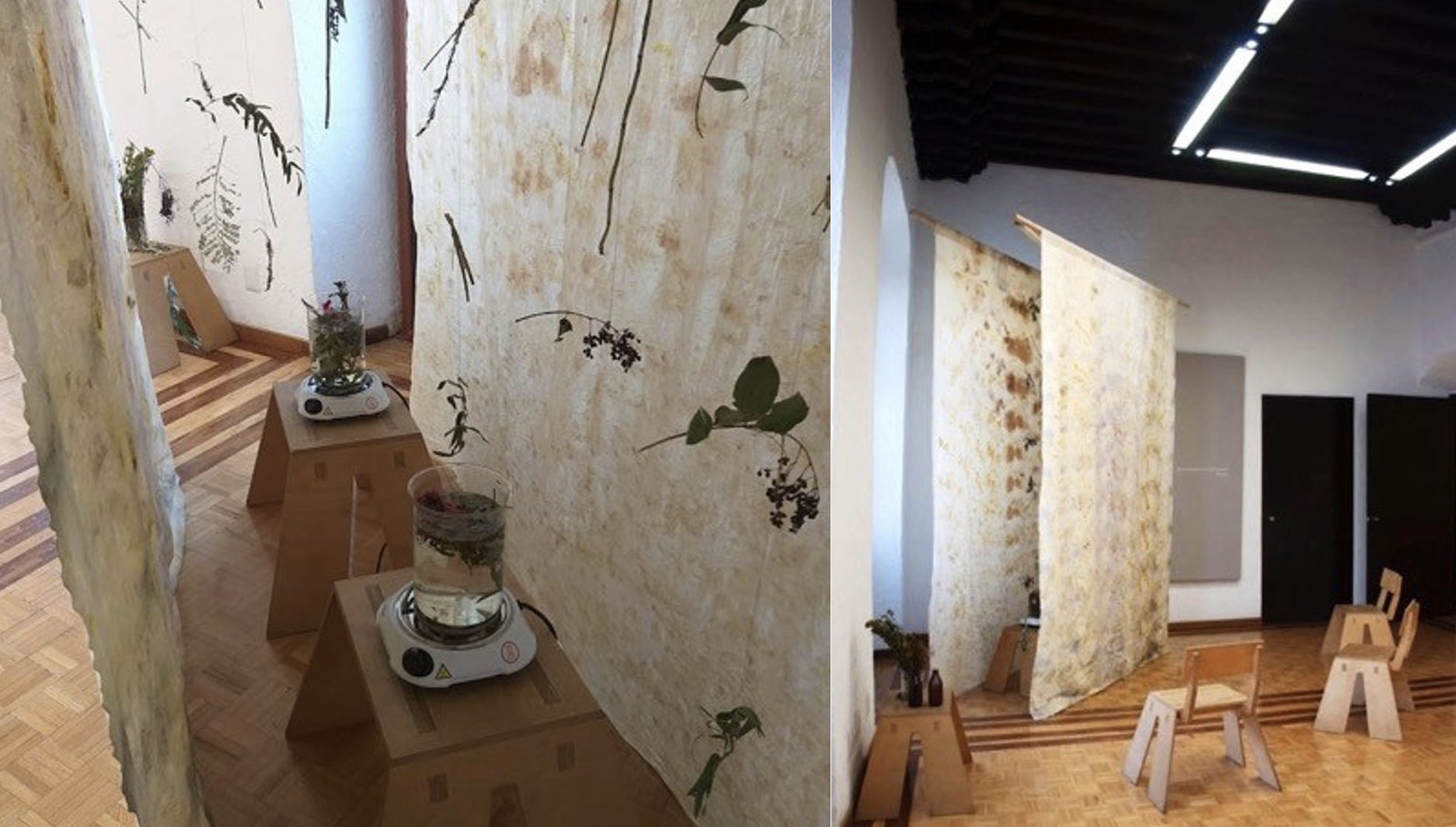
Exposition name: Bioceno
Location: Museo de la Cancillería, Mexico City
Date: Mar 2020
Curator: Jeannette Betancourt
Description: An immersive installation featuring cotton fabrics dyed with medicinal plants and accompanied by vapor vases designed for inhalation rituals. The aromatic steam carries the healing properties of pirul, eucalyptus, bougainvillea, pericón, cempasúchil, elderberry, horsetail, and orange blossom, evoking traditional cleansing practices for physical and spiritual renewal. -
Salvia Divinorum
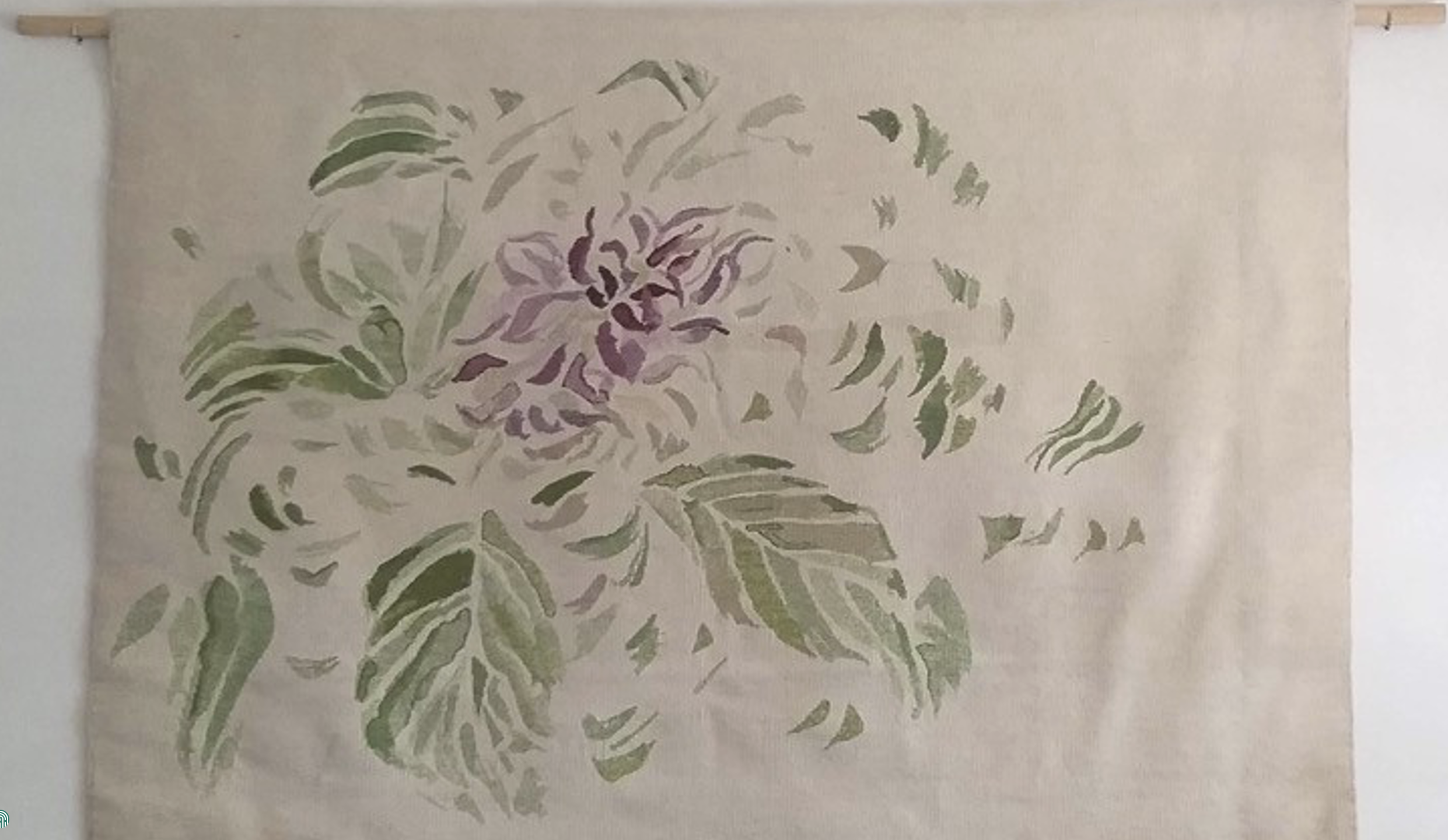
Exposition name: Salvia Divinorum
Date: 2019 – 2020
Collaboration with: Gobelin Mexican Workshop
Lead: Jaime Ashida
Master Artisan: Abraham Flores
Dimensions: 2.40 meters by 2 meters
Material: Clay, ceramics & glass
Description: This tapestry, measuring 2.40 by 2 meters, was created between 2019 and 2020 in collaboration with the Gobelinos Mexicanos workshop in Guadalajara, Jalisco, under the direction of Jaime Ashida and woven on a vertical loom by master artisan Abraham Flores. Made entirely of natural wool, the piece is based on an original watercolor painting by myself and represents a collaboration with the studio, blending traditional textile craftsmanship with contemporary artistic expression.